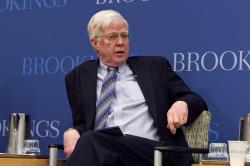Abstract
This paper focuses on an explanation for the large shift over the past two decades in the composition of the income of the aged (65+), increasing the role of earned income and reducing the importance of income from their own assets. We find that the pattern of change is consistently reported in all of the major household surveys. The increase in the importance of labor income can be attributed to delayed exit from the labor force by workers at older ages. We attribute the increase in work time to a rise in the proportion of more educated workers who choose to continue working, changes within the pension system that previously encouraged early retirement, and a decline in the availability of retiree health insurance. The increase in work time is concentrated among the highest income groups and those with the most education, suggesting that it is largely voluntary. The fall in asset income can be traced to lower interest rates and a reduced propensity for the aged to convert their wealth to annuities. It does not reflect reduced wealth at older ages. A measure of the annuity equivalent of their wealth holdings suggests that there has been no decline for aged units. We also find only a weak relationship between changes in asset income and the decision to remain in the workforce.
Download the full paper from the Center for Retirement Research at Boston College »



